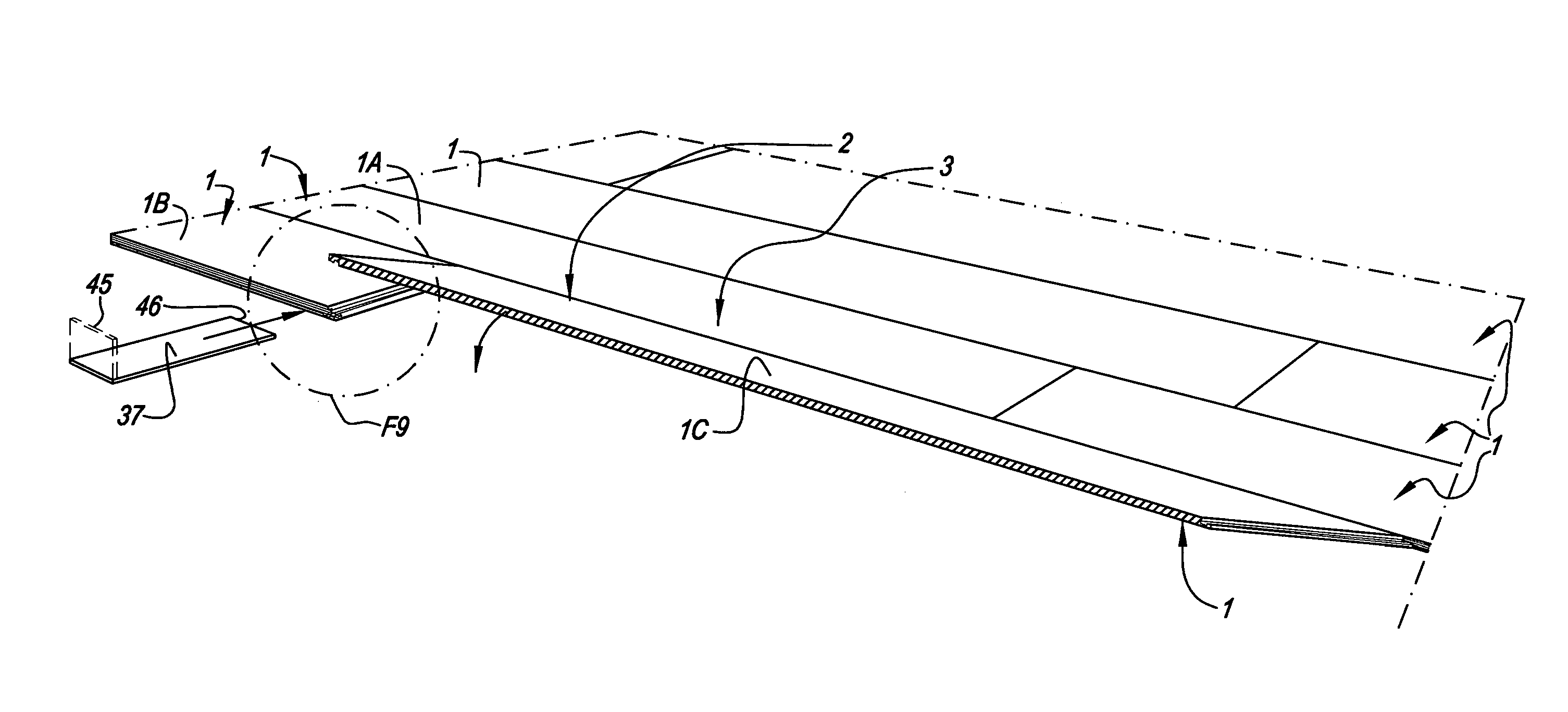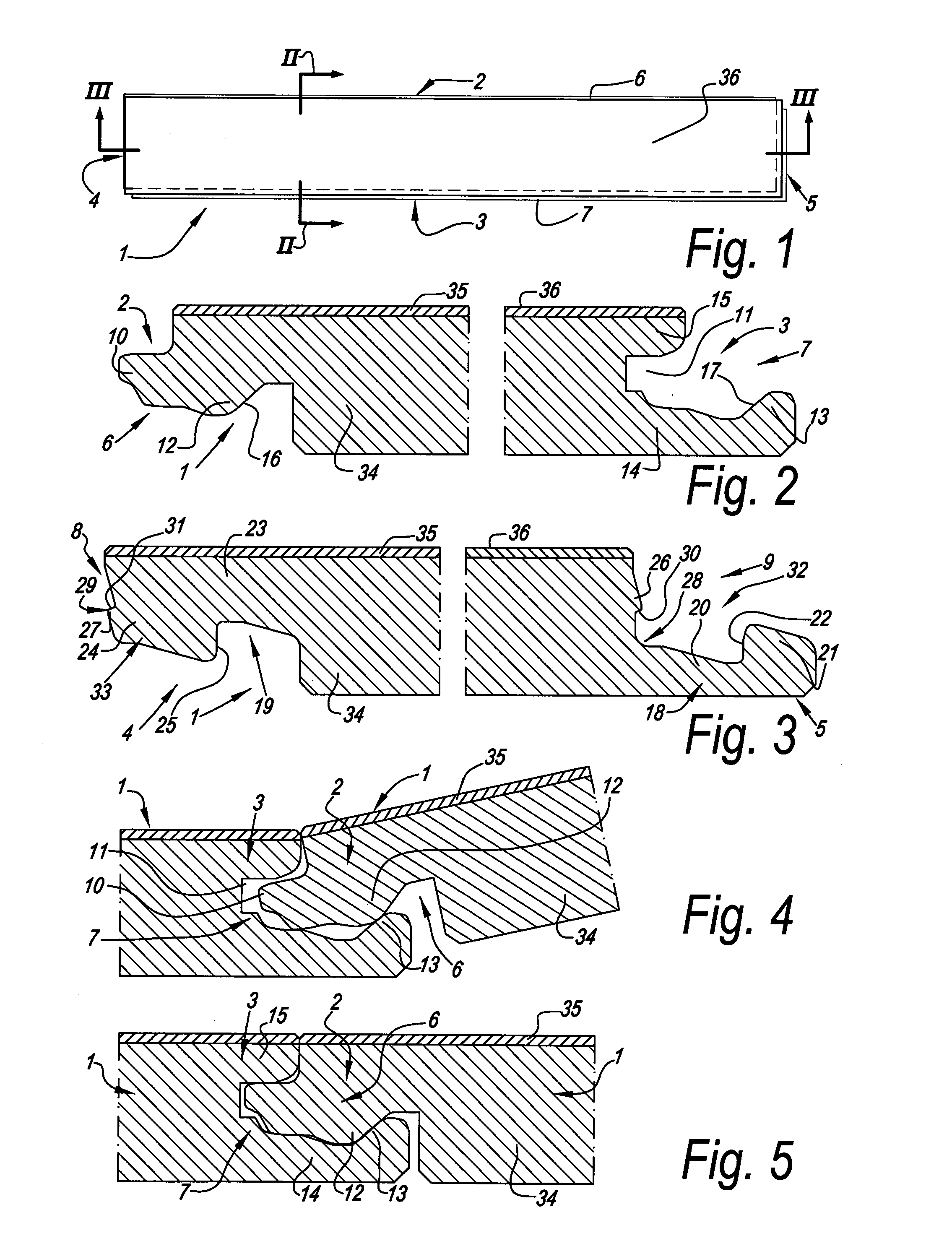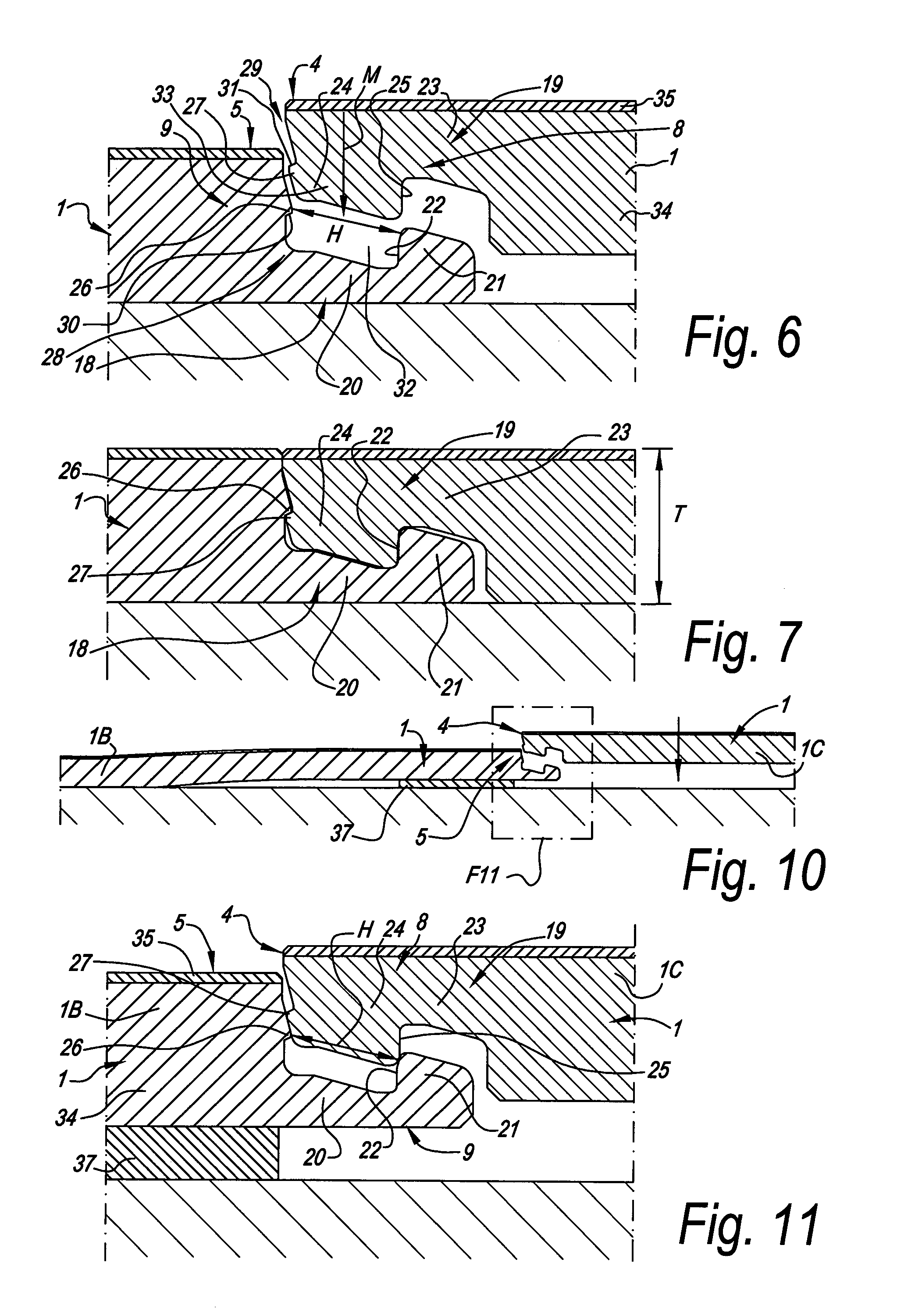Panel, covering and method for installing such panels
a technology of panels and coverings, applied in the field of panels, can solve the problems of low production rate, difficult to fit into each other, and deviations in tolerances of panels obtained in this manner, and achieve the effect of smooth production, better alignment and positioning
- Summary
- Abstract
- Description
- Claims
- Application Information
AI Technical Summary
Benefits of technology
Problems solved by technology
Method used
Image
Examples
Embodiment Construction
[0114]In FIGS. 1 to 7, an embodiment of a panel 1 according to the invention is represented, which is realized as a floor panel, in which all first five aspects of the invention are applied.
[0115]In the represented example, the panel 1 is made as an oblong rectangular strip and thus comprises a first pair of opposite edges 2-3, which in this case form the long sides of the panel 1, and a second pair of opposite edges 4-5, which form the short sides of the panel 1.
[0116]As is represented more in detail in FIGS. 2 and 3, both pairs of opposite edges 2-3 and 4-5 comprise coupling parts 6-7, 8-9, respectively, which allow to mutually couple a plurality of such panels 1 to each other.
[0117]As specifically represented in the FIGS. 4 and 5, coupling parts 6-7 at the first pair of opposite edges 2-3 are configured such that two of such panels can be coupled to each other at these edges 2-3 in a locking manner by means of a turning movement. Herein, the coupling parts 6-7 form a first lockin...
PUM
| Property | Measurement | Unit |
|---|---|---|
| thickness | aaaaa | aaaaa |
| thickness | aaaaa | aaaaa |
| thickness | aaaaa | aaaaa |
Abstract
Description
Claims
Application Information
 Login to View More
Login to View More - R&D
- Intellectual Property
- Life Sciences
- Materials
- Tech Scout
- Unparalleled Data Quality
- Higher Quality Content
- 60% Fewer Hallucinations
Browse by: Latest US Patents, China's latest patents, Technical Efficacy Thesaurus, Application Domain, Technology Topic, Popular Technical Reports.
© 2025 PatSnap. All rights reserved.Legal|Privacy policy|Modern Slavery Act Transparency Statement|Sitemap|About US| Contact US: help@patsnap.com



